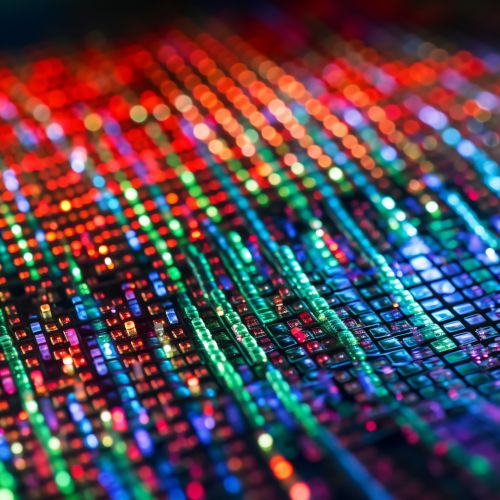Advances in Quantum Dot Display Technology
Introduction
Quantum dot display technology represents a significant advancement in the field of display technology, offering enhanced color accuracy and energy efficiency compared to traditional liquid crystal displays (LCDs) and organic light-emitting diode (OLED) displays. This technology utilizes quantum dots, nano-sized semiconductor particles, to produce pure monochromatic red, green, and blue light.


Quantum Dots and Their Properties
Quantum dots are nanocrystals made from semiconductor materials, typically between 2 and 10 nanometers in size. Due to their small size, quantum dots exhibit quantum mechanical properties, such as quantum confinement, which allows them to emit light of specific frequencies when excited by electricity or light. The color of the emitted light is directly related to the size of the quantum dot, with smaller dots emitting shorter wavelength (bluer) light and larger dots emitting longer wavelength (redder) light.
Quantum Dot Display Technology
Quantum dot display technology leverages the unique properties of quantum dots to enhance the color and energy performance of displays. This technology can be implemented in various types of displays, including LCDs and OLEDs.
Quantum Dot LCDs
In quantum dot LCDs, a layer of quantum dots is added to the traditional LCD structure. This layer, known as the quantum dot enhancement film (QDEF), is placed between the LCD backlight and the color filter. The quantum dots in the QDEF are excited by the light from the backlight and emit their own light, which is then filtered through the color filter to produce the final image.
Quantum Dot OLEDs
Quantum dot OLEDs (QD-OLEDs) represent a more recent development in quantum dot display technology. In QD-OLEDs, the quantum dots are used as the emissive layer, replacing the organic materials used in traditional OLEDs. This results in displays with improved color accuracy and energy efficiency, as well as potentially longer lifespan.
Advantages of Quantum Dot Displays
Quantum dot displays offer several advantages over traditional LCD and OLED displays. These include enhanced color accuracy, improved energy efficiency, and potentially longer lifespan.
Enhanced Color Accuracy
Quantum dots can produce pure monochromatic light, resulting in displays with a wider color gamut and more accurate color reproduction compared to traditional displays. This is particularly beneficial for applications where color accuracy is critical, such as professional photo and video editing.
Improved Energy Efficiency
Quantum dot displays are more energy efficient than traditional displays. This is because quantum dots can convert light into color more efficiently than the phosphors used in LCDs or the organic materials used in OLEDs.
Longer Lifespan
Quantum dots are more stable and durable than the organic materials used in OLEDs, potentially resulting in displays with longer lifespan. However, further research and development is needed to fully realize this potential.
Challenges and Future Directions
While quantum dot display technology offers significant advantages, there are also challenges to be overcome. These include the need for further improvements in efficiency and lifespan, as well as concerns about the environmental impact of quantum dots.
Despite these challenges, the future of quantum dot display technology looks promising. Ongoing research and development efforts are focused on improving the performance and sustainability of quantum dot displays, as well as exploring new applications for this technology.
